Name Byrhtnoth Byrhtnoth | ||
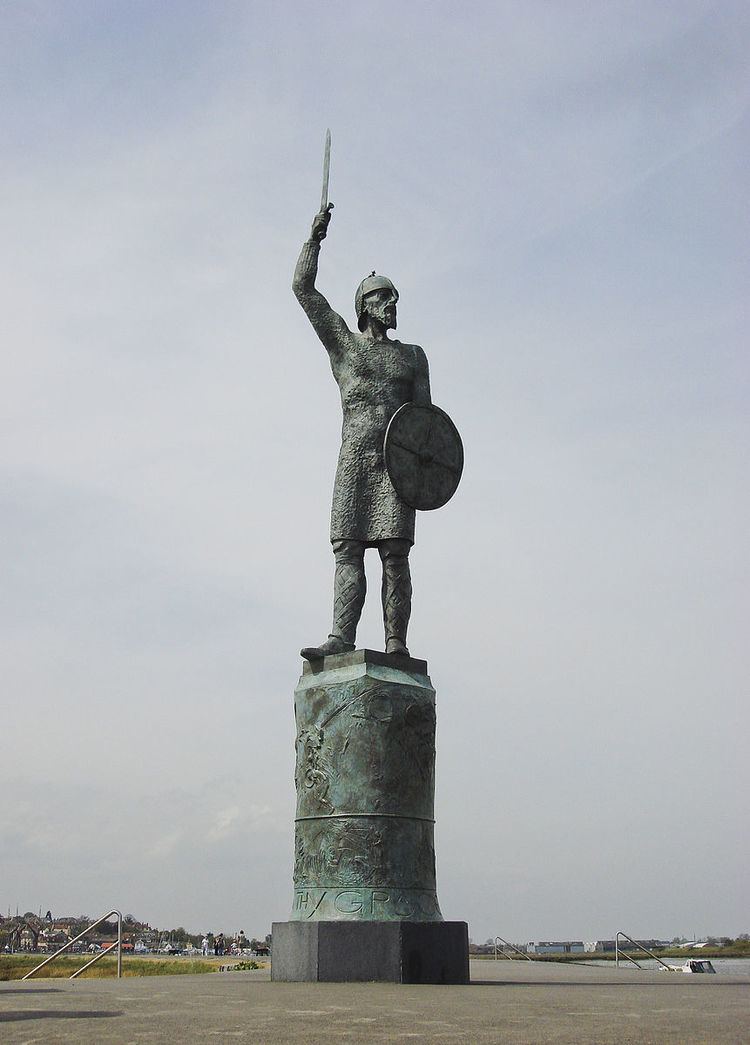 | ||
Died 991 AD, Maldon, United Kingdom | ||
Maldon promenade byrhtnoth statue out to the wrecks of oxygen scotia
Byrhtnoth was Ealdorman of Essex who died 11 August 991 at the Battle of Maldon. His name is composed of the Old English beorht (bright) and noth (courage). He is the subject of an ancient poem, and more recently a statue.
Contents
- Maldon promenade byrhtnoth statue out to the wrecks of oxygen scotia
- Byrhtnoth Brethren To The Fire Trumpets Full Album
- Death in battle
- Patronage and burial
- Reburials
- Family
- Memorials
- References
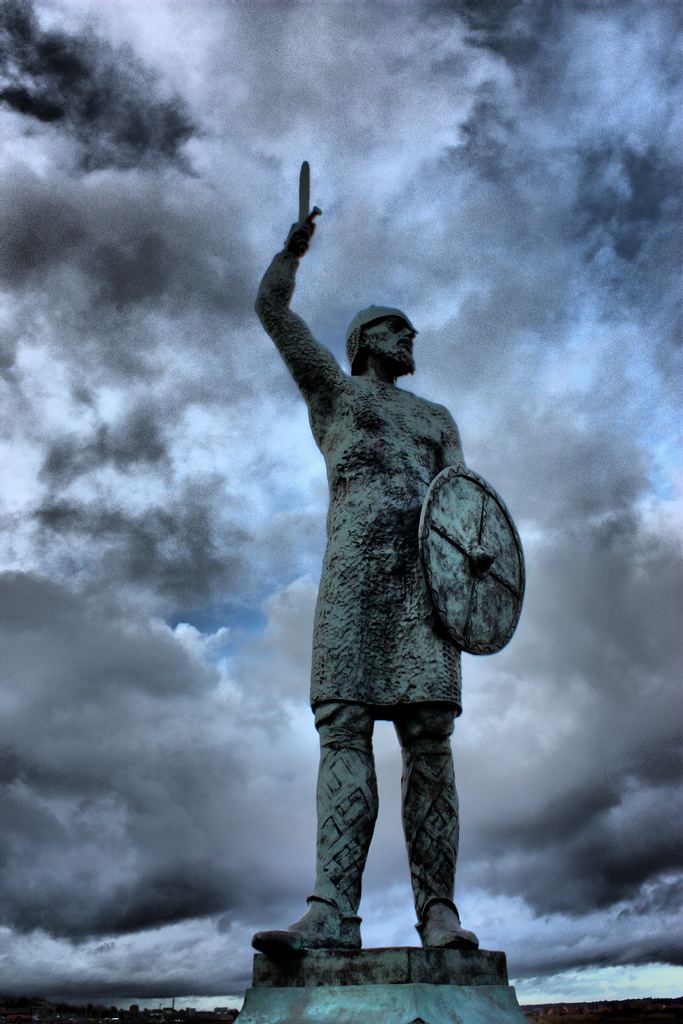
Byrhtnoth - Brethren To The Fire Trumpets (Full Album)
Death in battle
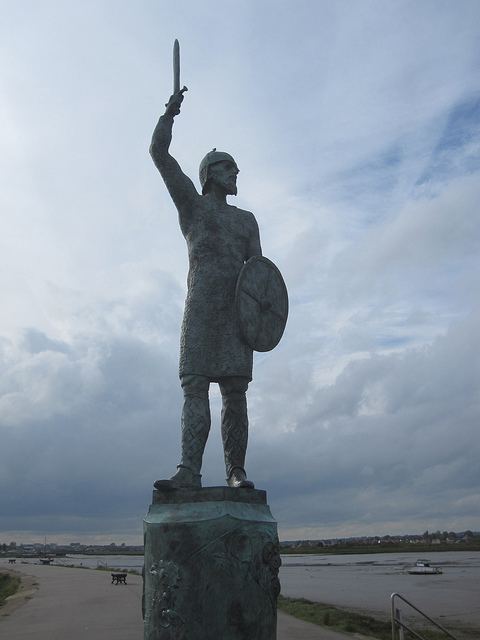
His death, while leading the Anglo-Saxon forces against the Vikings in 991, is the subject of the famous Old English poem The Battle of Maldon. As presented there, his decision to allow the Vikings to move to a better position was heroic but fatal, though this may not represent reality. He was said to stand well over six feet in height, and was around the age of sixty years at the Battle of Maldon, with "swan-white hair". Although it is believed that he fell early in the battle, some say that it took three men to kill him, one of them almost severing Byrhtnoth's arm in the process. He had previously had several military successes, presumably also against Viking raiders.
Patronage and burial
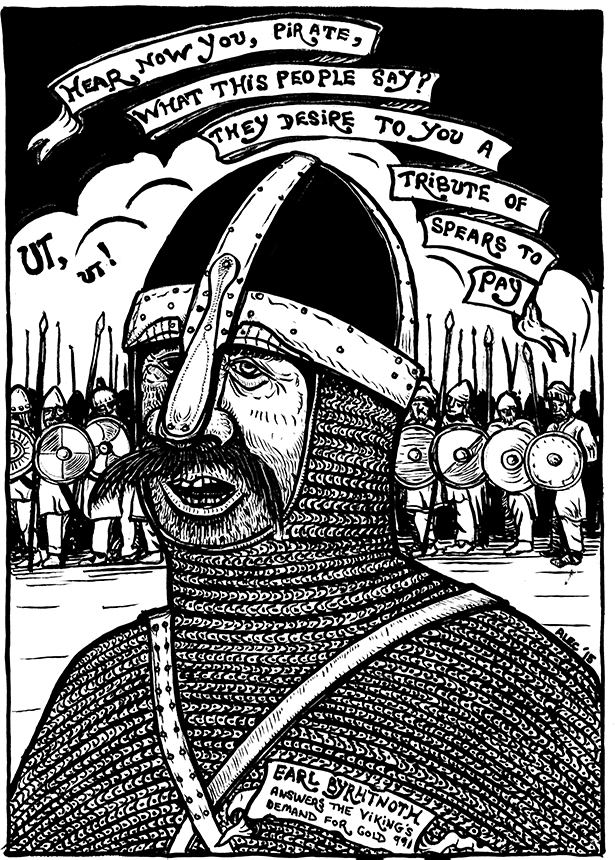
Byrhtnoth was a patron of Ely Abbey, giving it many villages (including Spaldwick, Trumpington, Rettendon, Soham, Fulbourn, Impington, Pampisford and Teversham). He was buried there alongside Archbishop Wulfstan the homilist. The Liber Eliensis records that his widow gave the Abbey a tapestry or hanging celebrating his deeds, presumably in the style of the Bayeux Tapestry, the only surviving example of such a work. This was given immediately after his death, so had probably been hanging in his home previously.
Reburials
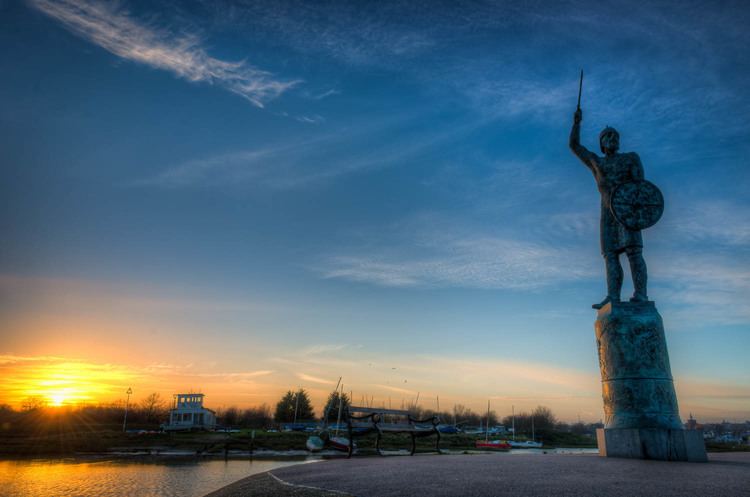
After his burial, his remains, along with six other Saxon 'benefactors of Ely Church' (also known as the seven 'Confessors of Christ') have been moved and reburied three times. Archbishop Wulfstan (died 1023), with six Bishops (Osmund of Sweden, Athelstan of Elmham, Ælfwine of Elmham, Ælfgar of Elmham, Eadnoth of Dorchester) and Byrhtnoth were all exhumed from their burial places in the old Saxon Abbey Church, and in the mid-1150s the remains were reinterred in the 'Northern Part' of the new Norman Church, which by then had been made Ely Cathedral.
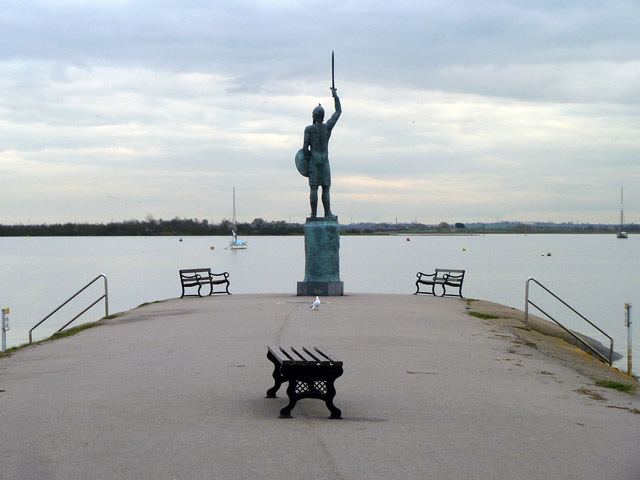
Following the collapse of the central tower, in 1322, a new octagonal space was created, and a wall was built on its north side to separate the monastic area of the choir from the pilgrim entrance and route to the shrine of Æthelthryth (St Etheldreda). Within this wall the seven benefactors were buried, with wall paintings of each in an elaborate arcade, facing the pilgrim entrance, perhaps to remind visitors of the enduring respect that can accrue from such generosity.
The shrines were destroyed and pilgrimages ceased at the Reformation, but in 1769, when the choir stalls were moved out of the Octagon, the wall was demolished and James Bentham found that the remains of the seven benefactors were still there, each in a separate compartment, although Byrhtnoth's was headless. All the clerics were estimated to be over 6 feet (1.8 m) tall, and Byrhtnoth's bones suggested that he stood at 6 feet 9 inches (2.06 m). On 31 July 1781 they were again re-interred, with considerable ceremony, at the far east end of the Cathedral, in niches constructed within the gothic splendour of Bishop Nicholas West's Chantry chapel.
Family
Byrhtnoth was married to Ælfflæd, sister of the dowager Queen Æthelflæd of Damerham, making Byrhtnoth a kinsman of King Edgar by marriage. Byrhtnoth may have had a daughter called Leofflæd, however she is not mentioned in any pre-Conquest source.
Memorials
Recently, a statue created by John Doubleday has been placed at the end of the Maldon Promenade Walk, facing the battle site of Northey Island and the Causeway. The battle site itself has a National Trust plaque recording his 'heroic defeat and death'.
As well as the Anglo-Saxon poem, The Battle of Maldon, J.R.R. Tolkien's short play in verse, The Homecoming of Beorhtnoth, Beorhthelm's Son takes place on the battlefield of Maldon and deals with Byrhtnoth's death.
